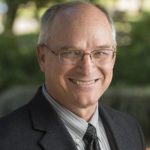The 500th Anniversary of the Reformation
The 500th Anniversary of the Reformation
On October 31, 1517 Martin Luther, Dr. of Theology, planted on the door of the Castle Church in Wittenberg, in Saxony, Germany, 95 theological theses for discussion and debate. It was the standard academic procedure for announcing a debate. Soon, very soon, his words (not couched in formal academic prose and occasionally satirical and acerbic) would be printed in many different cities, would be read across Europe, and would be used to challenge traditional church teaching and leadership. He understood himself to be a faithful Christian, and Catholic theologian, and later a reformer of the one true church. But sometimes his pen ran away with him. And he was pushed to opposition. He became a leader in his local area, a writer and thinker of great power, one sought out by many from distant places for advice and counsel, and for others an example of pride and an enemy of the peace of the church. He was a genius, and a problem.
The times were ripe for reform. The church needed reform. Many did not respect the early sixteenth century papacy, often with good reason. Reform movements were already active in Italy and among Catholic lay and clerical leaders across Europe, but much of it was unknown outside of small circles. Christian Humanist reform in the writings of some like Erasmus could be sincere, pious, but also satirical and biting. Germany was not always friendly with Italy. Lay people were increasingly asserting their influence and authority. Luther’s words hit a cord that resonated beautifully and powerfully among many. Some latched on to them for their own, less than devout purposes.
Those famous words and phrases that were used to summarize his teaching and have since characterized the protestant tradition came from his pen: sola fides (faith alone), sola gratia (grace alone), sola scriptura (scripture alone), the freedom of the Christian, the priesthood of all believers, alien righteousness, simultaneously just and a sinner. Even when misunderstood and misused they held great power. He recounted his spiritual anguish and joy, his personal experience under law and grace. His teaching reflected in a personal and direct way what others came to see as their own experience. He left the monastery. He married and he and his wife, Katherine von Bora, raised a family. He was a devoted father. She managed the home, an old monastery, and what became a large hostel and educational operation, and shared in his work. He remained a professor until his death.
Only a genius, a rare soul, coins the terms and recounts the experiences with and through which others begin to understand their own experience, reinterpreting ancient texts and finding those texts, the Scripture, alive with new meaning and new hope. But he did not appeal to everyone. How could a new teaching just appear? By what authority did he speak? Even his friends and teachers found him a mystery. Soon there were many new versions of the Christian faith. He wondered at the end of his life if perhaps he might have been wrong or pushed too hard.
While he unleashed a new understanding of the Christian life that developed in multiple ways among different theological traditions which looked back to him for inspiration, his writings were used to encourage violent rebellion. He looked to the nobility to lead reform. Princes would fight against the Emperor and claim Luther’s teaching as the rightful faith of their regions. Cities would reform and change their laws based on his teaching, or at least their interpretation of his teaching. Some would say he did not go far enough. Peasants would revolt, and Luther would call upon the prince to put them down with immediate force. And those different theological traditions looking back to him would fight against each other. Those battles, those very literal wars, and persecution and execution of those who believed differently would be factors in the loss of faith of a formerly unified Christian Europe, and the development of a more skeptical and rational way of living in the world. They would also lead to calls for tolerance, from the faithful and from the skeptical.
By any measure we choose, Martin Luther, and the Reformation he unleased were among the most creative and influential persons and movements known in the history of the Church, Europe, the West and the World. We do well to celebrate the Reformation, Luther and those who came after him, and to attempt to understand how it has shaped us and our faith as well as some of the darker moments of our history.
There are many ways to get in touch with our Reformation Heritage. I will write about some of them throughout the year. But two immediately available ways might be intriguing as a start.
A number of us will be touring Reformation Europe in June of 2017. There is still room on the tour. What a way to learn and enjoy some time together! See details at FPU 500th Anniversary Reformation Tour and for more information FPU Website 500th Anniversary Reformation Tour. See also my Facebook page.
The Christian History Institute publishes a weekly blog called “Reformation Thursday.” You can subscribe to it here: Reformation Thursday Blog Signup.
For an earlier reflection anticipating the 500th Anniversary of the Reformation, here is an earlier Reformation posting on how the Reformation might be experienced at FPU.




